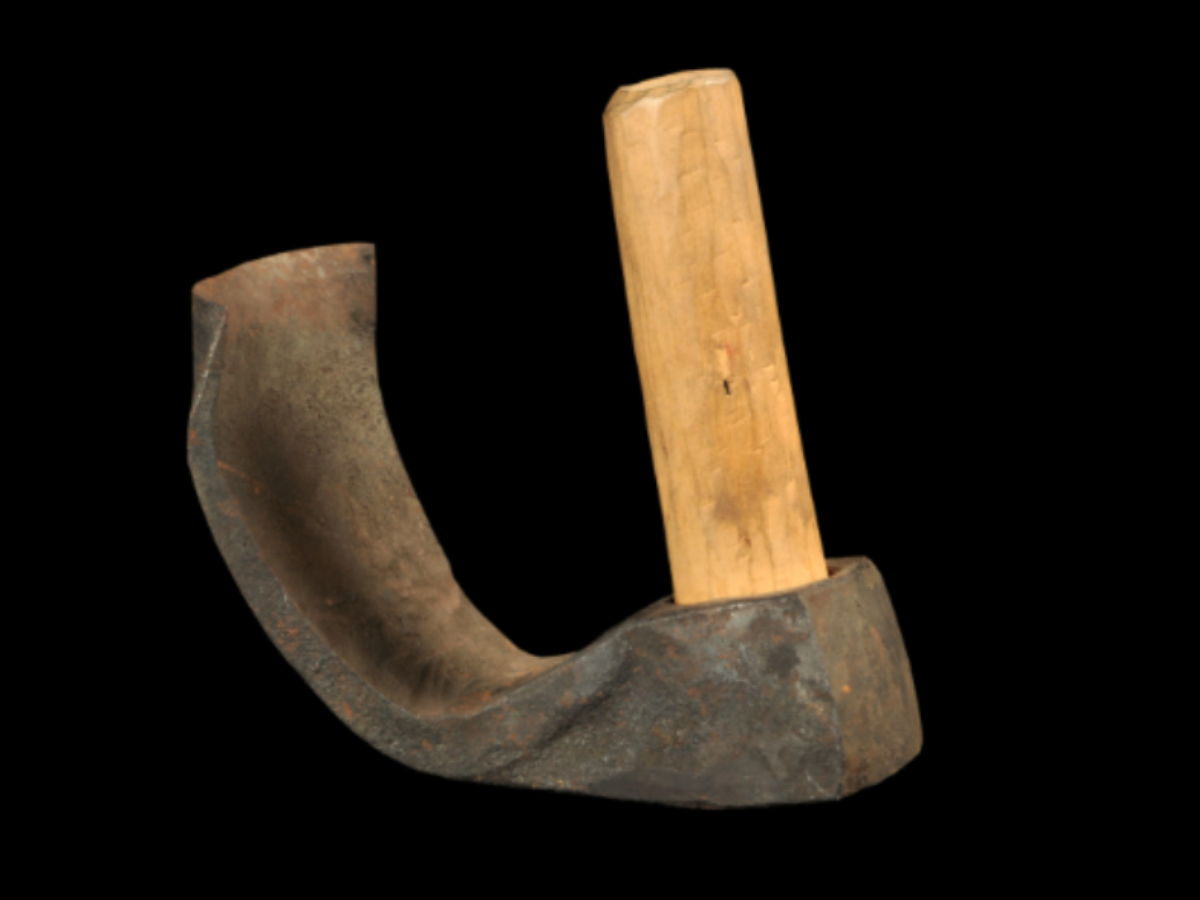State
Tribe Name
Art Type
short description
These tribes are deeply rooted in agriculture and the craftsmanship of traditional instruments. Iron spades are among the prime instruments in use among the Rabha community, assisting in farming and other manual crafts.
This mini-spade is intended with utmost efficiency and user comfort. It is essentially made up of two parts: a small wooden handle, approximately one foot in length, and the iron blade. The cutting edge of the iron blade is slightly bent at the ends to dig and scoop the soil with efficacy. The opposite end is flattened to assure the balance and durability of use. The blade has a circular eye through which the small round wooden handle is inserted and held in place. Ergonomically, this design allows more control and places less strain on the user's hands while executing the fieldwork.
The agricultural application of this design is varied in digging soil, planting crops, and small-scale excavation work. The small size of the tool is especially useful when working in small agricultural plots and home gardens. The making has inherent knowledge explaining the lifestyle of self-sustainability among the Rabha tribe, which extends to the skills of making and maintaining these tools that have been passed through generations, thus conserving the community's traditional skills.
The recognition and continued use of indigenous tools like the Rabha iron spade are pertinent to appreciate the traditional knowledge behind it and encourage sustainable farming practices .
This mini-spade is intended with utmost efficiency and user comfort. It is essentially made up of two parts: a small wooden handle, approximately one foot in length, and the iron blade. The cutting edge of the iron blade is slightly bent at the ends to dig and scoop the soil with efficacy. The opposite end is flattened to assure the balance and durability of use. The blade has a circular eye through which the small round wooden handle is inserted and held in place. Ergonomically, this design allows more control and places less strain on the user's hands while executing the fieldwork.
The agricultural application of this design is varied in digging soil, planting crops, and small-scale excavation work. The small size of the tool is especially useful when working in small agricultural plots and home gardens. The making has inherent knowledge explaining the lifestyle of self-sustainability among the Rabha tribe, which extends to the skills of making and maintaining these tools that have been passed through generations, thus conserving the community's traditional skills.
The recognition and continued use of indigenous tools like the Rabha iron spade are pertinent to appreciate the traditional knowledge behind it and encourage sustainable farming practices .
Thumbnail

Filter Postion
Right
Filter Background
Off
Theme
Filter Header Image

content
Image

description
These tribes are deeply rooted in agriculture and the craftsmanship of traditional instruments. Iron spades are among the prime instruments in use among the Rabha community, assisting in farming and other manual crafts.
This mini-spade is intended with utmost efficiency and user comfort. It is essentially made up of two parts: a small wooden handle, approximately one foot in length, and the iron blade. The cutting edge of the iron blade is slightly bent at the ends to dig and scoop the soil with efficacy. The opposite end is flattened to assure the balance and durability of use. The blade has a circular eye through which the small round wooden handle is inserted and held in place. Ergonomically, this design allows more control and places less strain on the user's hands while executing the fieldwork.
The agricultural application of this design is varied in digging soil, planting crops, and small-scale excavation work. The small size of the tool is especially useful when working in small agricultural plots and home gardens. The making has inherent knowledge explaining the lifestyle of self-sustainability among the Rabha tribe, which extends to the skills of making and maintaining these tools that have been passed through generations, thus conserving the community's traditional skills.
The recognition and continued use of indigenous tools like the Rabha iron spade are pertinent to appreciate the traditional knowledge behind it and encourage sustainable farming practices .
This mini-spade is intended with utmost efficiency and user comfort. It is essentially made up of two parts: a small wooden handle, approximately one foot in length, and the iron blade. The cutting edge of the iron blade is slightly bent at the ends to dig and scoop the soil with efficacy. The opposite end is flattened to assure the balance and durability of use. The blade has a circular eye through which the small round wooden handle is inserted and held in place. Ergonomically, this design allows more control and places less strain on the user's hands while executing the fieldwork.
The agricultural application of this design is varied in digging soil, planting crops, and small-scale excavation work. The small size of the tool is especially useful when working in small agricultural plots and home gardens. The making has inherent knowledge explaining the lifestyle of self-sustainability among the Rabha tribe, which extends to the skills of making and maintaining these tools that have been passed through generations, thus conserving the community's traditional skills.
The recognition and continued use of indigenous tools like the Rabha iron spade are pertinent to appreciate the traditional knowledge behind it and encourage sustainable farming practices .
Image Mode
landscape
promoted
Off
Verified
Off
